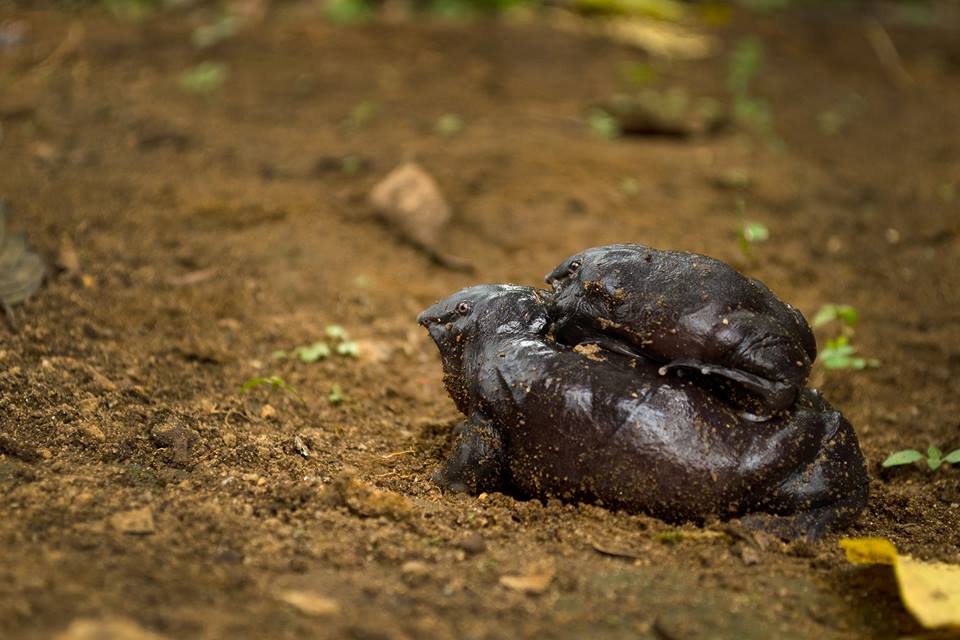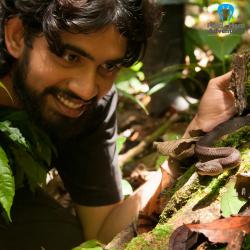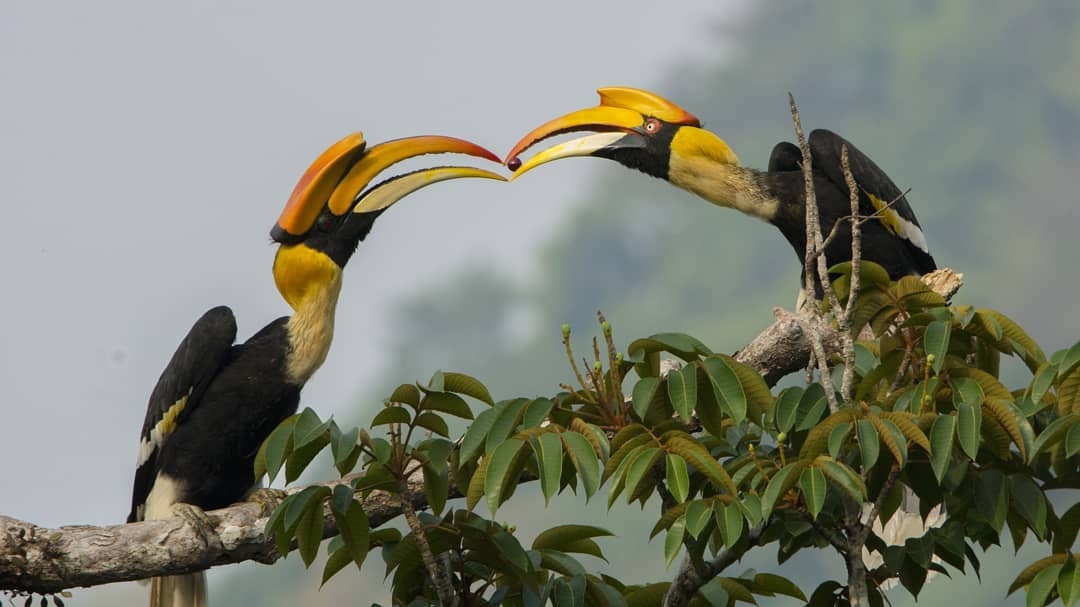The Western Ghats, being one of the biodiversity hotspots in the world holds a significant amount of endemic species. Formed during the break-up of the Gondwana super-continent about 150 million years ago, these ancient mountains served as an equatorial rainforest refugia during cataclysmic events such as the Deccan traps volcanisms during the late Palaeocene – early Eocene epoch to harbor an exorbitant variety of flora and fauna.
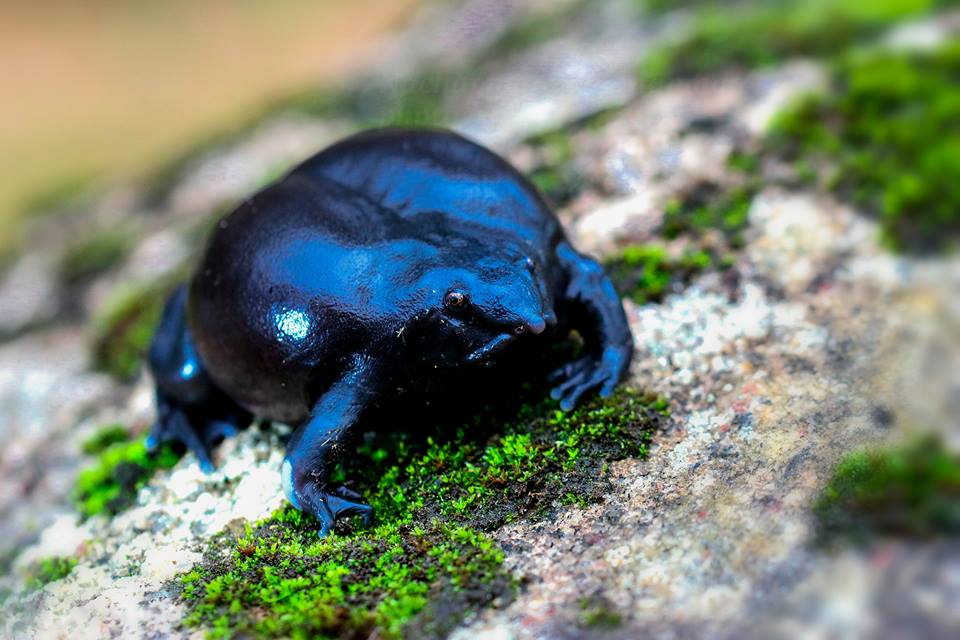
A small and unusual frog, which may come across as alien to the common eye, the purple frog (Nasikabatrachus sahyadrensis), is one of the most unique frogs in the world. Described as recent as in the year 2003, the discovery of this frog added a significant chapter to understanding the biogeography of Indian anurans. With a short and stout build, a unique skeletal structure that potentially shares affinities to the extinct Indian genus Indobatrachus from the Eocene epoch, the purple frog represents a family of frogs that is endemic to the southern Western Ghats called Nasikabatrachidae. The family Nasikabatrachidae shares ancestral relationships from the early Cretaceous period with a unique family of frogs, Sooglossidae that are endemic to the Seychelles islands.
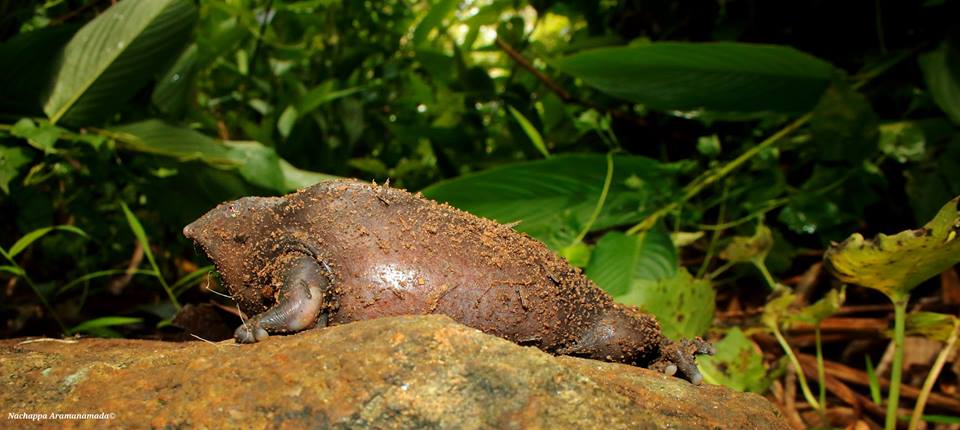
The purple frog shows numerous adaptations that are specialized for its burrowing lifestyle. With no toe disks, short limbs, strongly calcified bones and ossified skull, a spade-like projection in its feet and its iconic protrusion on its snout, the purple frog spends most of its lifetime burrowing underground while waiting for the magic of the monsoons to make landfall in the sholas.
Although frog vocalizations are heard for well over a month during the pre-monsoon periods, they get out of their burrows for a short period of about two weeks per year to breed. Potentially earless and almost completely fossorial, it is curious from an evolutionary and ecological viewpoint that these frogs even have a call. Being a relict from the age of the dinosaurs, this strange beauty and perhaps its ancestors decorated the rainforest streams of the southern Western Ghats for over 130 million years.
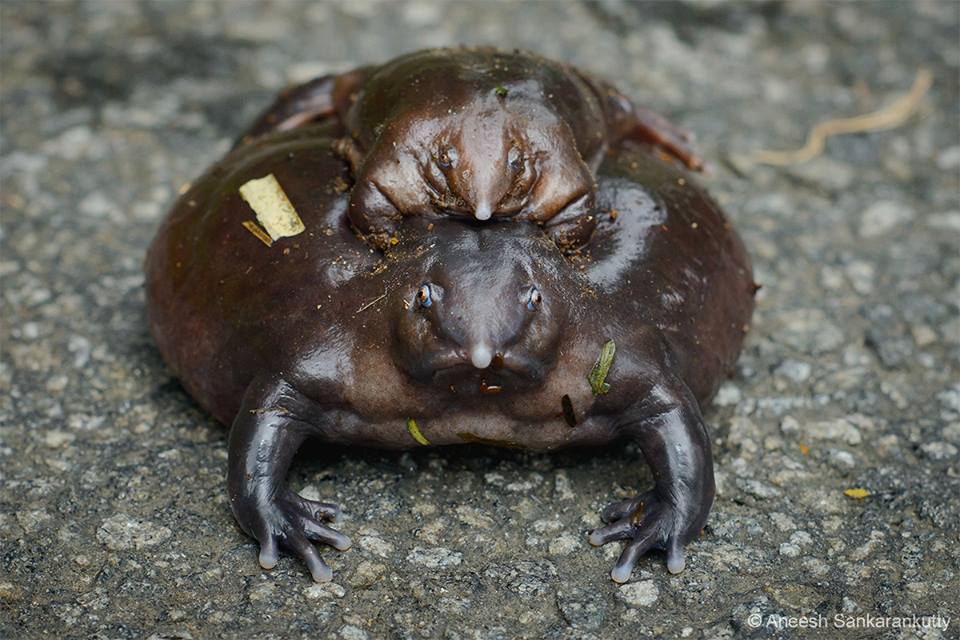
The purple frog has short calls that can be heard from amongst the streams in the dense, moist-evergreen forests of the southern Western Ghats between April – June. Many males call along the stream edges within close proximity to each other till an observing female approaches the individual she chooses. They amplex (mate) in the forest floor that is crisscrossed with various temporary torrential streams caused by the pre – monsoons and lay eggs in between the rocks in the streams in mucilaginous strings. The tadpoles hatch in the streams, develop into small froglets that set out for a year of burrowing and eventually emerge out during the years to come.
Threats:
Owing to its specialized lifestyle in the shola forests of the Anamalais, this endangered frog is threatened by many factors such as habitat destruction, pollution, poaching and could potentially be affected by the deadly amphibian fungal epidemic, chytridiomycosis. Despite the vast and intricate beauty of the Western Ghats, the fragility of its ecosystems on which the fate of the purple frog hangs leaves me with endless trepidation. With over 200 species of anurans extinct, this infectious amphibian fungal disease could pose a potential threat to this species although no signs have been seen so far yet. This species is also a victim to traditional tribal practices, with several instances of poaching reported for its use in tribal medicine and black magic.
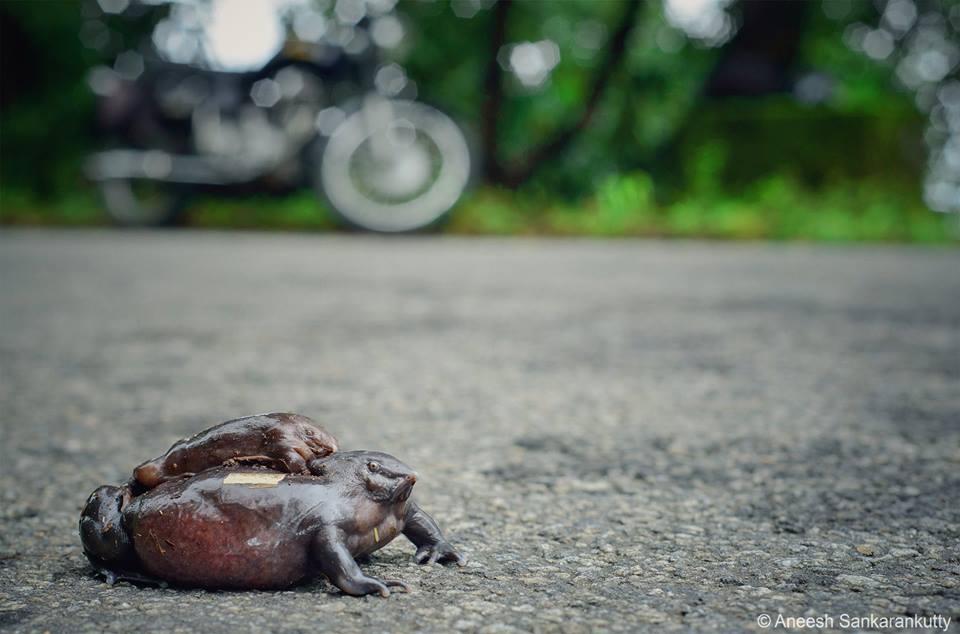
Endemic to a few mountains of the southern Western Ghats, this frog is as fragile as it is endangered. Performing its secret ecological role in keeping the intricate cycles of the shola forests functional and alive, this living fossil continues to amaze me and only wonder how many more of such secrets and species the Western Ghats hides from us which only time and science can explain.
Comparable to a dinosaur if they were alive, this ancient family of frogs is a relict from the early Cretaceous period. During those special and rare moments, I come across the purple frog in the Anamalai hills, it is only helpless and silly that a tune of John William’s tune from the movie ‘Jurassic Park’ plays in my head. With a stupid smile stuck to my face, I gaze at this frog while reminiscing of my conversations with Dr. Franky Bossyut about the sheer impact of this find during my student years. I only wish that I understood what the frog might communicate, just to hear the ancestral stories of the Western Ghats throughout time. Such an animal hiding in burrows beneath the streams of our very own Anamalais makes me feel elated.
About the series – Icons of Anamalais:
A treasure house of biodiversity, the Anamalai’s region of the Western Ghats is home to a spectacular array of wild species, some rare and endemic, that are found nowhere else on Earth. “Elephants Hills” as it is literally translated, the region is one of the most picturesque landscapes in the country that hosts a broad variety of ecosystems ranging from tropical wet evergreen forests to sholas and montane grasslands to dry, scrub jungles.
Home to the large mammals like the Asiatic Wild Elephants, Indian Gaur, the endangered species like the Wild Dogs, Nilgiri Tahr, and Lion Tailed macaques, Anamalai’s is also first to be home to all 16 endemic bird species of Western Ghats.
This series of articles by The Pollachi Papyrus, celebrates the iconic birds and mammals of the Anamalai’s –a unique ecological tract and a global biodiversity hotspot that needs protection and conservation.

